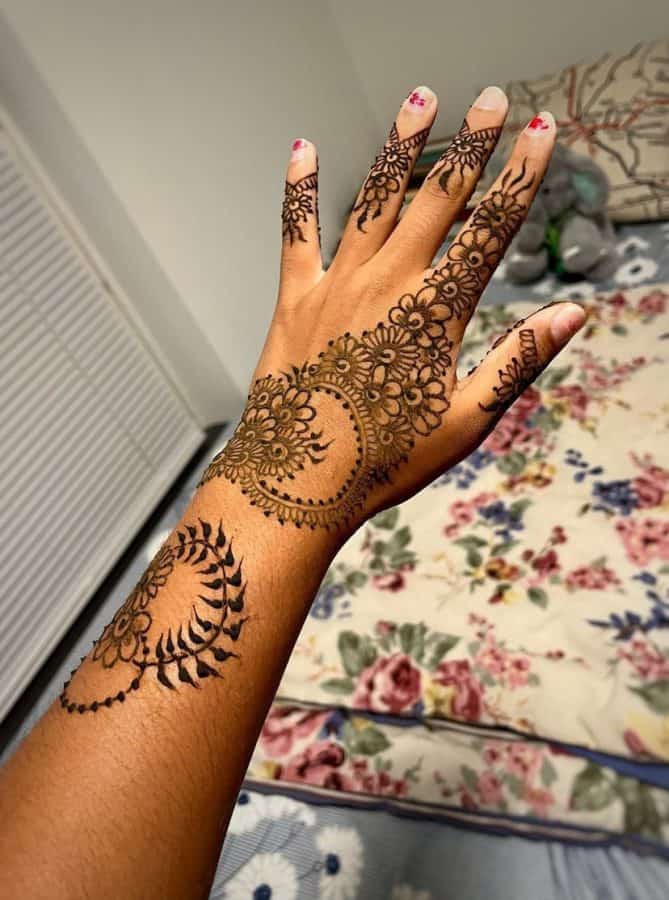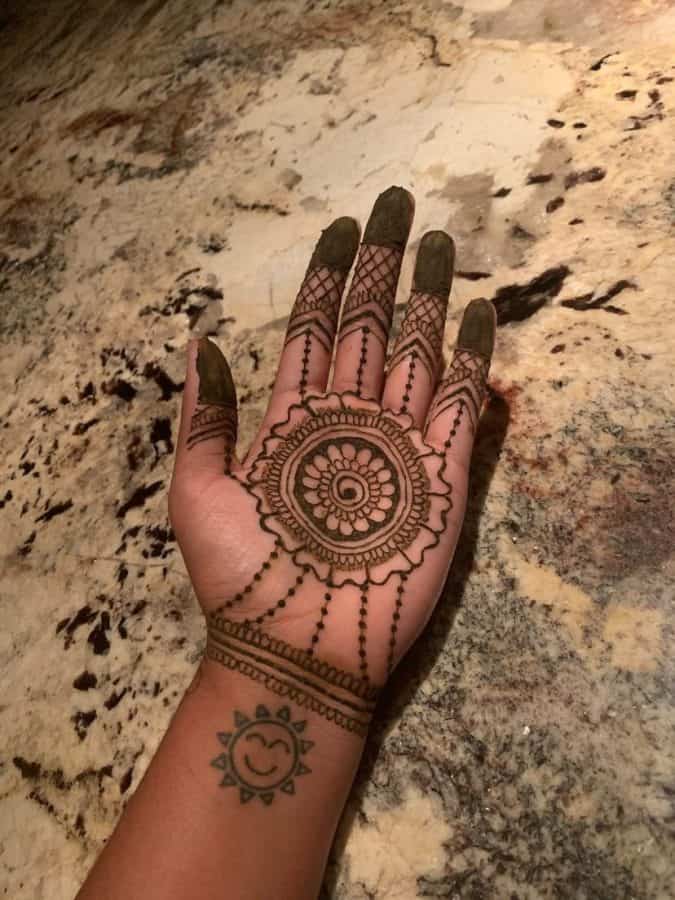How one UA student is bringing henna to the Capstone
October 16, 2022
From traditional to high fashion, henna has existed for thousands of years. Typically done on the hands, forearms and feet, henna art is known for its intricate details and symmetry, and popular designs often featuring floral patterns with dark hues that pop against the skin.
But despite its longevity, many still don’t know much about this temporary tattoo art form. Chandni Bhat, a sophomore majoring in chemistry and math, is seeking to spark conversation through the beauty of henna through her small business, The Moonlight Henna Company.
Henna is made by drying the leaves of the henna plant, also known as hina, before grinding it up and adding various liquids, such as lemon juice and essential oils, to form a paste used to temporarily dye the skin.
Designs are drawn on the skin using the henna paste, which should be left on for eight hours for best results. After this, the paste can be scraped off but it’s recommended to avoid getting water on the patterns for the first 24 hours. The design will first appear as an orange-red color before later deepening to a beautiful, dark red-brown stain.
Bhat said the color will be most prominent for the first two to three days and begins to fade after water use, typically lasting one to two weeks.
While henna is tied to many cultures, it is most predominant in India. Known as mehndi in Hindi, henna is typically used for celebratory occasions such as weddings. Often, the groom’s name will be hidden somewhere in the bride’s henna, which the groom must find later as part of a newlywed game.
Bhat said she grew up loving henna and that is why she is seeking to bring others the same joy and learning through her small business.
Bhat said her henna sessions have been opportunities to educate others about her culture.
While her first customers have been members of the South Asian community, Bhat said she is excited for henna to become more popular outside of her culture. While Bhat has done many traditional designs, she is open to non-traditional uses of henna as well. She has created a dragon design and seen others use henna to experiment before committing to permanent ink.
“It’s a harmless temporary tattoo that people can just enjoy,” Bhat said.
While some may worry about crossing the boundary between cultural appreciation and appropriation, Bhat said people shouldn’t be scared to have a conversation about henna appreciation. She wants people to be curious about henna, its history and its significance.
“I’m ready to answer any and all questions to the best of my ability,” Bhat said. “Henna has many different uses. Asking me about it, wanting to know more — that’s a sign that people are looking to appreciate henna.”
Michael Zengel, a sophomore majoring in physics, is a friend of Bhat’s and has gotten floral-themed henna done twice by Bhat. Zengel said that while he did not know the significance of henna, he had heard of it before and knew it was some sort of temporary tattoo.
Zengel said college students, especially those at The University of Alabama, can never learn too much about cultural diversity.
“Henna introduces people to a side of culture that they haven’t experienced,” Zengel said.
Zengel said he encourages others to have henna done by Bhat and to learn more about its cultural ties.
“Chandni is a part of it, she’s getting it out to everyone,” Zengel said. “Listen to what she says, be open to learning about it, and know that it’s important to certain cultures.”
For those interested in getting their own henna done, they can go to Bhat’s Instagram, @the_moonlight_henna, to schedule an appointment. Typical designs take 15-20 minutes while others may take 20-30 minutes if the design is more complex or has more area to cover.
“You get henna because it looks cool, but then you learn the significance behind it,” Zengel said. “It awakens you to different sides of culture that you didn’t know much about.”









